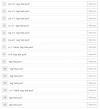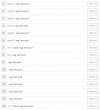This is an interesting situation, and honestly I'm not sure what way this would go regarding niche archetypes... The basic question in my mind is: Is the "unique cards per person" or "total amount of cube drafted" more important to niche archetypes?Without having tested it, I like that my suggestion puts more total cards from the cube in the pod's hands. Even though each individual drafter sees slightly less unique cards, my intuition is that this ends up supporting niche archetypes better than the regular 3 x 15 draft.
The answer might be more multifaceted than "well A/B is better obvs". For one thing, there is more than one kind of what we are calling "niche archetypes". Here are a few variants I can think of:
1. One card (or a small handful) that take a section of the cube and single-handedly reflavor it into something unique. I think Feldon of the Third Path is a decent example of this. He can, with relatively few drafting changes, shift the flavor of a
2. An archetype that is more reliant on a set of otherwise unique cards to function, or has special requirements that you wouldn't otherwise need to consider when drafting a "normal" archetype. A decent example is an artifacts-matter deck. Decks where a more significant portion of the deck are specialized towards it's niche goal. Storm would be an extreme example.
3. Three color cards might have their own variant on this spectrum, as they are by definition more "niche" than a one or two color card, but don't necessarily fit into either niche category above. But similar to the above, a drafter is less likely to swivel into the three color deck if they aren't already in two of those colors and/or if it's too late into the draft to safely build out the support for that third color.
How I think the two numerical totals being pondered affect things:
Unique cards per person: One individual drafter will have better luck searching the contents of the draft for the specialized pieces they need. This helps with my niche types 2 and 3, as it helps the player dig up the critical mass of artifacts and specialized artifact support they need for their artifact deck (to draw from the example given above), and it would help with searching for things like fixing and dual lands to help with getting into a third color.
Total cards drafted: The pod will see more of what the cube has to offer. This helps with my niche type 1 (and 3 to a degree). There's a higher chance that someone at the table will see that one creative piece that spurs them to taking their deck in a new direction. The Feldon, or the Borborygmos Enraged, or the Gisa and Geralf, or the Jeskai Ascendancy or what have you.
There's the obvious answer of "well more of both is best duh", but I don't know if that's actually the best for everyone's goals.
Then there's the point Mordor brought up, which is "what is the impact of the wheeling component?" What is the difference in deck compositions between seeing 100% of the cube and never wheeling vs. seeing 50% of the cube and wheeling each pack once?

Last edited:


